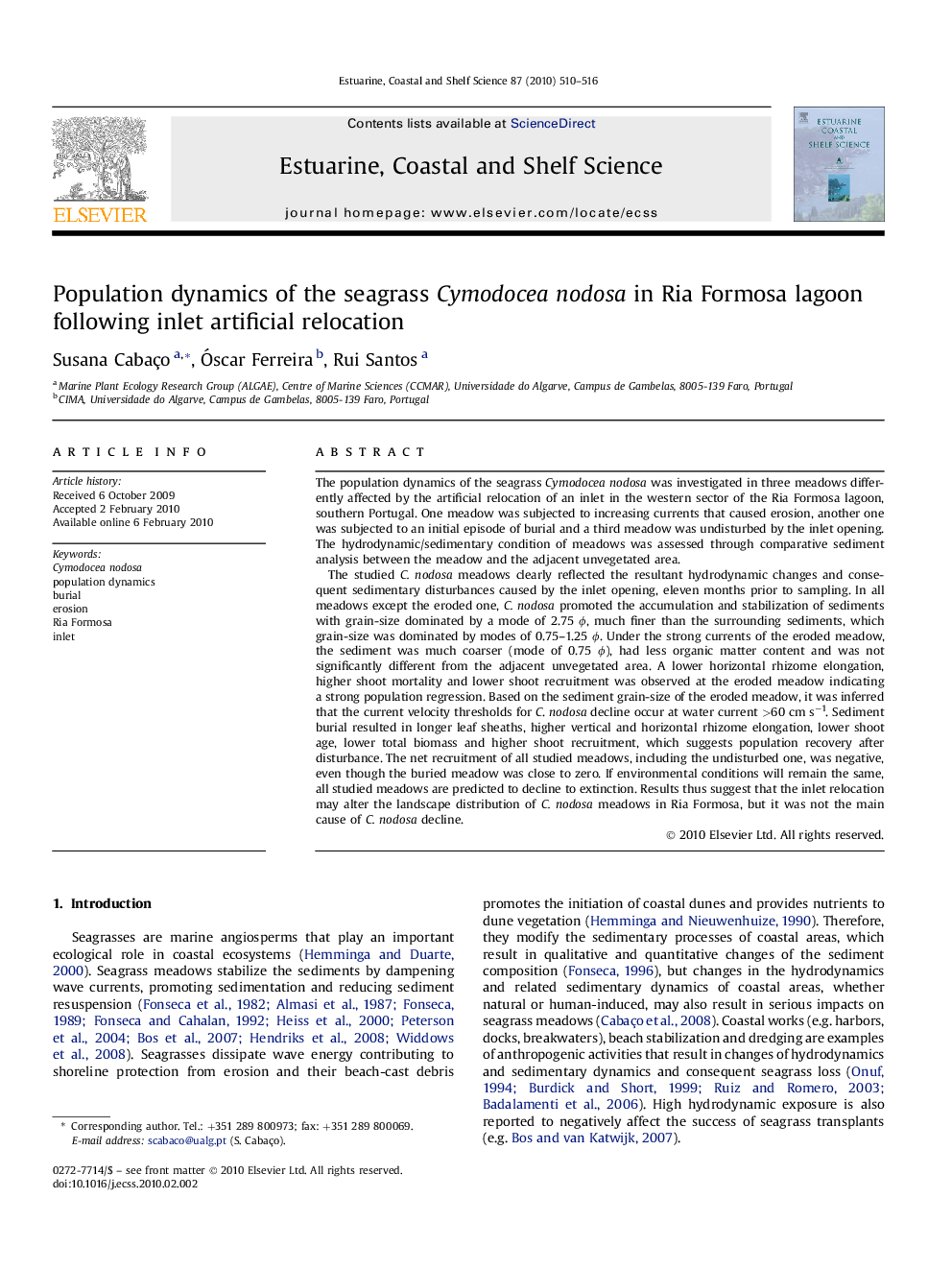| Article ID | Journal | Published Year | Pages | File Type |
|---|---|---|---|---|
| 4541065 | Estuarine, Coastal and Shelf Science | 2010 | 7 Pages |
The population dynamics of the seagrass Cymodocea nodosa was investigated in three meadows differently affected by the artificial relocation of an inlet in the western sector of the Ria Formosa lagoon, southern Portugal. One meadow was subjected to increasing currents that caused erosion, another one was subjected to an initial episode of burial and a third meadow was undisturbed by the inlet opening. The hydrodynamic/sedimentary condition of meadows was assessed through comparative sediment analysis between the meadow and the adjacent unvegetated area.The studied C. nodosa meadows clearly reflected the resultant hydrodynamic changes and consequent sedimentary disturbances caused by the inlet opening, eleven months prior to sampling. In all meadows except the eroded one, C. nodosa promoted the accumulation and stabilization of sediments with grain-size dominated by a mode of 2.75 ϕ, much finer than the surrounding sediments, which grain-size was dominated by modes of 0.75–1.25 ϕ. Under the strong currents of the eroded meadow, the sediment was much coarser (mode of 0.75 ϕ), had less organic matter content and was not significantly different from the adjacent unvegetated area. A lower horizontal rhizome elongation, higher shoot mortality and lower shoot recruitment was observed at the eroded meadow indicating a strong population regression. Based on the sediment grain-size of the eroded meadow, it was inferred that the current velocity thresholds for C. nodosa decline occur at water current >60 cm s−1. Sediment burial resulted in longer leaf sheaths, higher vertical and horizontal rhizome elongation, lower shoot age, lower total biomass and higher shoot recruitment, which suggests population recovery after disturbance. The net recruitment of all studied meadows, including the undisturbed one, was negative, even though the buried meadow was close to zero. If environmental conditions will remain the same, all studied meadows are predicted to decline to extinction. Results thus suggest that the inlet relocation may alter the landscape distribution of C. nodosa meadows in Ria Formosa, but it was not the main cause of C. nodosa decline.
